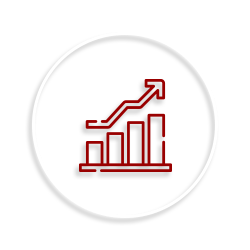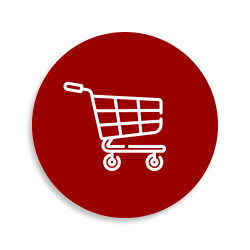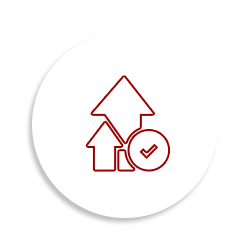There is a trick to meeting consumer demand while simultaneously allocating resources, balancing stock levels and maintaining a well-optimised warehouse. You can find it in a well-thought-out demand plan. The chief word in that last sentence is well-thought-out. It’s because an effective plan requires coordination across your entire organisation.
Introducing a demand planning process in your business will assist you in making well-informed supply decisions, forecast total sales and profit for a certain period and, most importantly, meet customer demand.
About the contributors
Rina Wilkens joined DotActiv in 2018 as a space planner. She has since worked her way up to the position of account manager. Today, she oversees the Health Department at Dis-Chem, which includes categories such as Vitamins, Sports and Foods.
Cheré Joubert joined DotActiv in 2019 as a space planner for the Health and Pharmacy Department at Dis-Chem. Since then, she has changed roles to cluster and assortment planner. She has a BConsumer Science in Food Retail Management.
Suné Oosthuizen joined DotActiv in late 2019 as a space planner for FMCG at Dis-Chem. In 2021, she changed roles to cluster and assortment planner. She has a BConsumer Science (Honours) degree in Clothing Retail Management.
Yolandé Beumer joined DotActiv in 2019 as a retail space planner for Edible Groceries at Pick n Pay. In 2020, she moved over to the Dis-Chem account. She studied BSc Consumer Sciences with business management at the North-West University.

What is demand planning?
Demand planning is a critical supply chain management process. If you speak to anyone involved in this process, you’ll likely hear it described as a way to predict and meet demand.
The Chartered Institute of Procurement and Supply or CIPs defines demand planning as “the management process within an organisation which enables that organisation to tailor its capacity … to meet variations in demand”.
That speaks to the heart of its purpose: ensure you have adequate stock to meet consumer needs when they decide to buy a product. That’s not always easy to achieve, and especially if you consider that demand fluctuates. Of course, you can anticipate demand to a certain extent. However, they can be unforeseen events - COVID-19 is a perfect example - which can derail any planning.
That's why it requires cross-functionality and alignment across several departments. Here, we're referring to your sales and marketing teams as much as your purchasing, supply chain, operations and production departments.
And the first step of this process is demand forecasting.
It involves the analysis, evaluation and projection of customer needs. In other words, predicting what the demand for a given product at a given time and given place will be. After you have forecasted demand, you can use it as an input for the capacity of supply. This will aid your purchasing/buying department to identify the necessary vendors or manufacturers to meet this demand.
From there, you’d deliver the forecasted demand to a warehouse or a retail store to meet customer satisfaction.
Let’s consider an example of this in a clothing retail environment.
Within such an environment, you’d need to properly plan your stock levels to avoid any over- and understock situations. That’s the death knell for you since it’ll lead to a loss in sales and shoppers going elsewhere. The added complication is that you need to plan for seasons and trends.
Let’s say you want to order stock for summer. You’d need to determine how much stock of each product to order, while considering the different sizes of clothing items, to keep up with expected demand. Fortunately, you can do that by analysing current trends in the market as well as your historical sales data.
In a food retailer, meanwhile, you would use the process of forecasting how much stock you would need within a certain period to meet customer needs based on data from the previous year or season. You can also consider external market data like consumer trends and competitor offerings.
For instance, you could introduce popular soup flavours or biodegradable packaging. Of course, you would need to take into account the shelf life of the product, the turnaround time for the order, where the stock will be sent to from the supplier and warehoused, and the time it would take for the product to be transported from the warehouse to the store.
That should not be an issue if you have executed any well-thought-out demand plan.

What is demand forecasting?
Demand planning is the overall process that you would follow to meet consumer demand - we’d established that much. When the talk turns to demand planning, it will invariably include mention of demand forecasting. That’s because - as we mentioned above - demand forecasting is one of its steps.
ShipBob’s Kristina Lopienski defines demand forecasting as “the process of using predictive analysis of historical data to estimate and predict customers’ future demand for a product or service.” As she points out, it can help you to make better supply decisions.
Simpler still, it’s a prediction of future events. Its purpose is to help you calculate the quantities of products that your customers would demand in the future.
What’s more, it also entails analysing the type of products that your customers will demand. For example, by forecasting the demand for products, you can also stay ahead and offer products earlier than your competitors, which means more profit for you and the opportunity to foster customer loyalty.
There are a few different ways in which you can approach demand forecasting.
Firstly, you can conduct qualitative research. You can use this when you have minimal data, which could be because you have a new product on your hands. In going this route, you would need to rely on expert opinion, market research and comparative analysis for your predictions.
A second approach is through a time series analysis. This is when you have clear historical data for a product and can spot popular trends. Such an approach will indicate seasonal changes in sales for a product and can assist any of your efforts in forecasting demand.
A third route is a causal model. It’s an advanced approach that considers external market data, sales data, promotional and marketing data when determining a demand forecast.
Let’s apply this to a clothing retail environment so that we remain consistent.
In this environment, your forecasting would entail researching current internal and external market data to predict consumer demand in the next few months. You’d need to do this because you would time having the stock in-store when demand increases. The longer you wait, the longer it will take for the stock to reach you and you will feel that in your pocket.
For example, forecasting a specific shirt type consists of different factors like predicting the colours and shirt styles that will be in fashion next season. Besides doing research into the trends, it also includes calculating and comparing the shirt types to another item that might already be in the market. With this information, you could also predict sales and demand for the new product.
From a food retailer’s viewpoint, you are primarily impacted by current trends that change seasonally and annually. A good example here is the gluten-free movement. If you take into account that a gluten-free pasta had higher sales than the previous year and has had continuous growth for a few years, it would be easy to predict that the sales would grow this year and provide you with opportunities to list more brands and include more variants.
This could lead to you becoming the destination store for this product category.

How can category management influence demand planning?
We have established that demand planning and forecasting play a role in helping you to meet customer demands. The fact that this is true means one other point: category management plays a vital part.
You would only need to look at the aim of category management to confirm that. Category management aims to provide customers with what they want, where they want it, and when they want it.
Category management also sets the foundation for demand forecasting, and you can use it throughout your entire supply chain with the help of a specialist like DotActiv.
Let's consider the various functions of category management to further unpack that.
The first function is around clustering.
Cluster optimisation allows you to gain a deeper understanding of shopper behaviour. That, in turn, enables you to optimise your assortment. Essentially, it means you can localise it to your target audience. You can know what products your customer's purchase in which stores. It allows you to match demand with what you stock. Conversely, you can know which products will not sell well in a particular cluster of stores.
Of course, that doesn't mean you shouldn't stock a product that doesn't sell well. There still might be a market, however small it may be. In that case, you can hold a limited amount. In doing so, you can meet the demand while not overstocking your shelves with a product that you know will only sell a few times throughout the month.
Once you understand the behaviour of your customers, it's time to optimise your assortments. Thanks to your collected data, and once analysed, you can ensure that the products within each category meet customer expectations. If they visit your store at any given time, they will find the products they want.
The optimised assortments will then reflect on your data-driven planograms. One of the elements that you can consider when building such planograms is days stock cover. Also known as days of supply, it is the number of days a product will be on the shelf before you should need to complete a replenishment exercise.
Planograms consider shelf capacity so you can determine how many products are necessary to fill the shelf and how frequently stock will replenish. Once created, and if you use specialist category management software such as DotActiv, you can extract product reports from your planograms.
You can communicate any planogram data to your demand planner. They will know exactly how much stock to order by product by store.
Conclusion
If you want to meet customer demand as efficiently as possible, you need to plan. Better yet, you need to consider investing in an end-to-end category management solution that will help you optimise your supply chain.
Looking for advice or need a category management solution that can help your business? Visit our online store here for more information or book a custom exploratory consultation.


